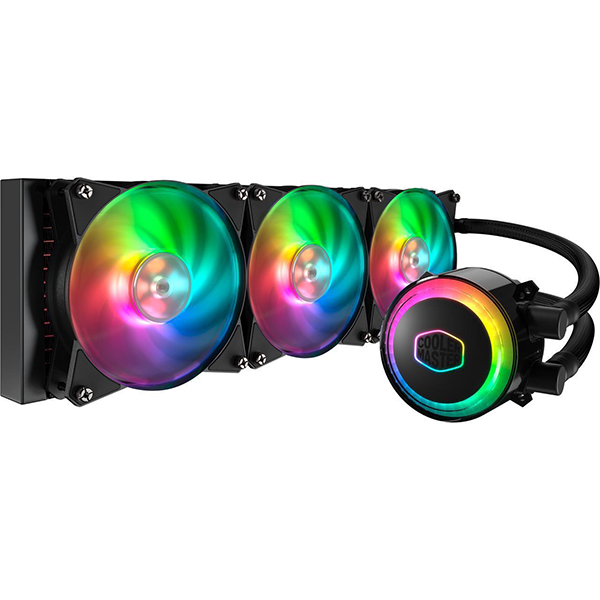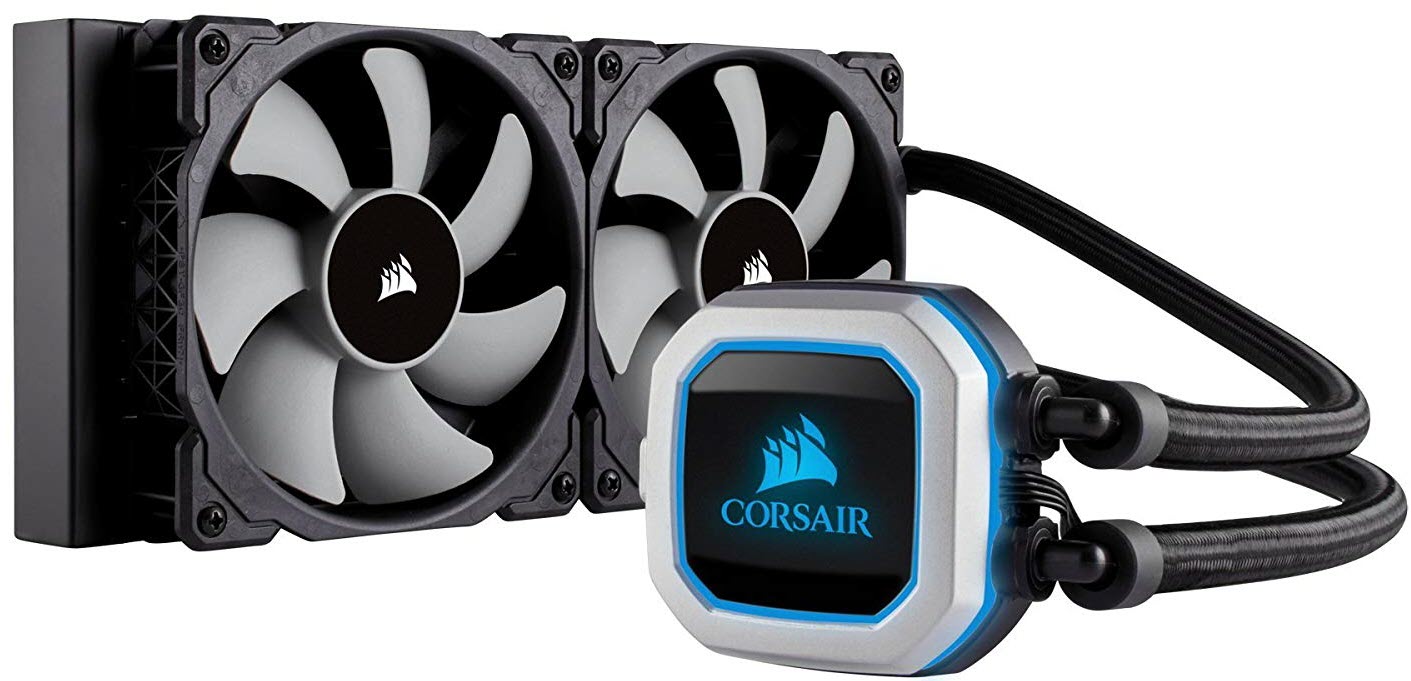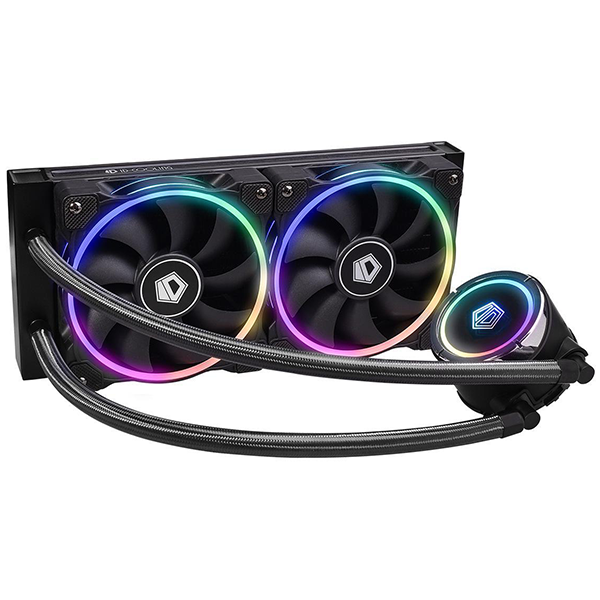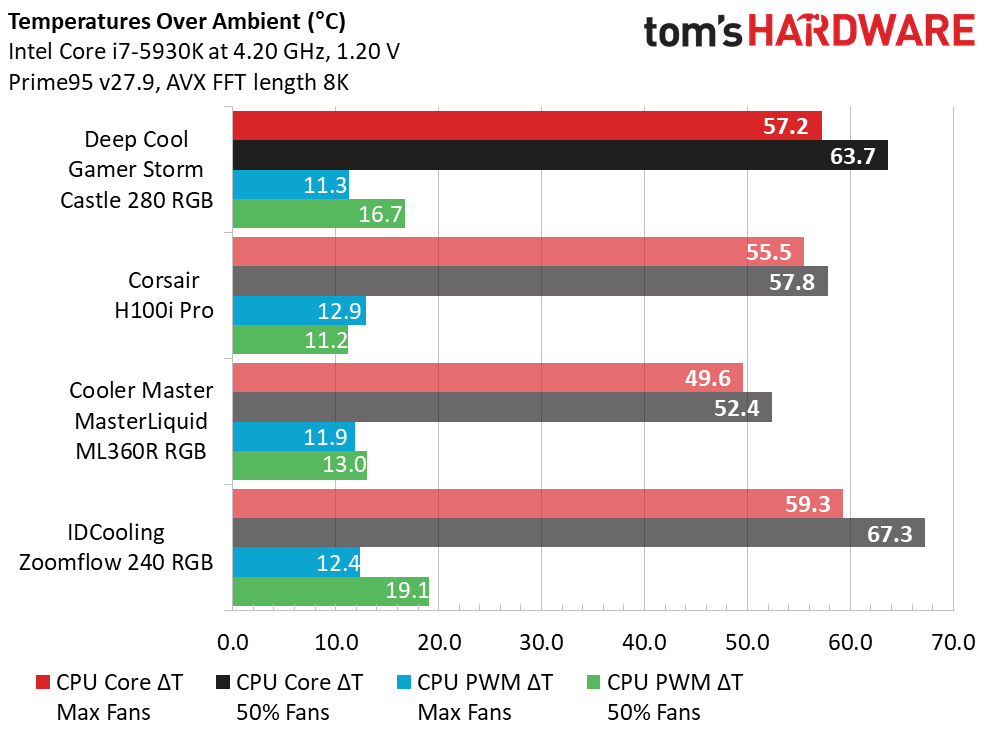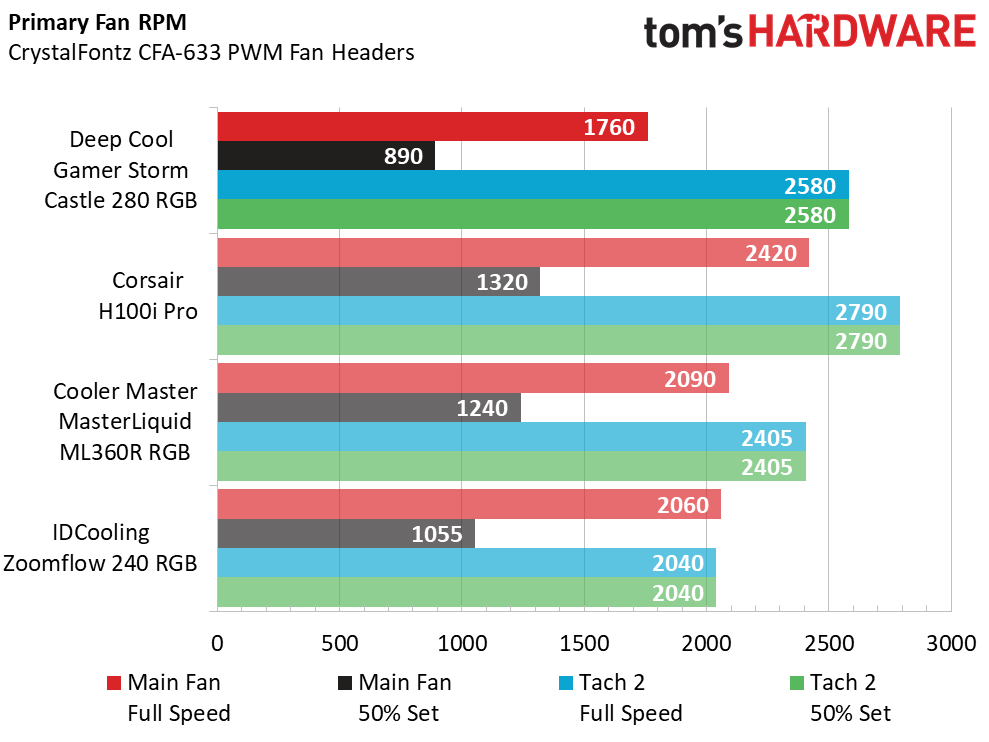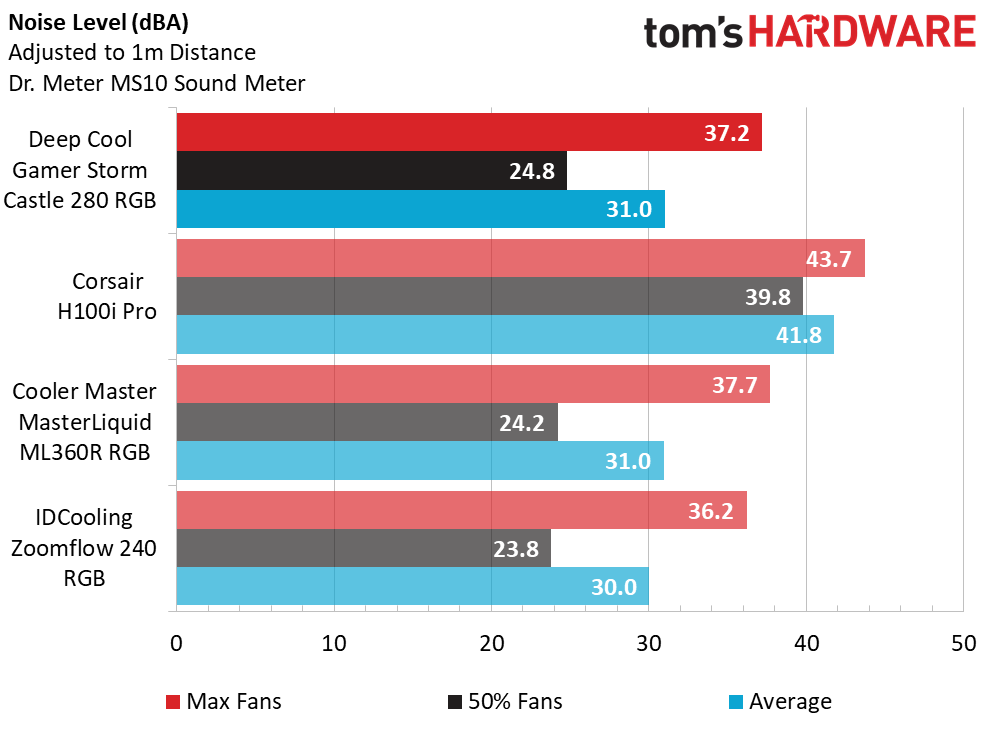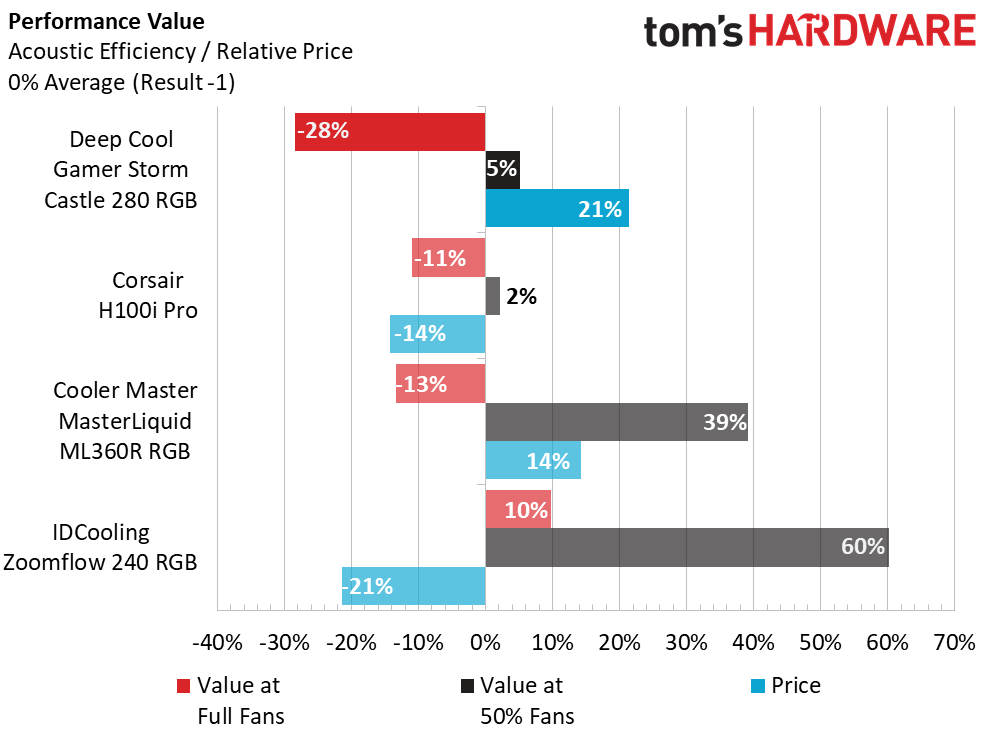Deepcool Gamer Storm Castle 280RGB Review: Bigger Than It Cools
Why you can trust Tom's Hardware
Testing Results & Conclusion
Comparison Coolers
Utilizing testing data from prior CPU cooler benchmarks on our Intel i7-5930K running at 4.2Ghz and 1.2v, we can shape comparisons with similar cooling products: the Corsair H100i Pro, the Cooler Master MasterLiquid ML360R RGB and the IDCooling Zoomflow 240 RGB. All tests are done on the same test bench hardware, set within our Corsair Graphite 760T chassis.
Unable to keep up with the best-in-class 360 performance of the MasterLiquid ML360R RGB, the Castle 280RGB nipped at the heels of the H100i Pro, a high-ranking 240 AIO in its own right. The Castle 280RGB did manage to turn in the lowest temperature readings of the group on our motherboard power delivery system, which shows it is able to effectively move air over nearby components.
It’s no surprise that the Castle 280RGB's pair of 140mm hydro-bearing PWM fans were the slowest spinning, since the other three coolers use smaller, 120mm spec. Those larger 140mm fans should be moving a comparable volume of air at lower speeds over the larger radiator surface.
Strangely enough, those 140mm fans weren’t nearly as quiet as expected, although at 1,700+ RPM, a fan that size is really churning the air. We’ve seen many 120mm fans top out of 1,800 RPM, so when the big blades cooling the Castle 280RGB were fully spun up, they created a decent bit of noise but were still within average decibel range.
It’s hard to beat the MasterLiquid ML360R, but the Castle 280RGB produced a respectable set of results when it came to observing thermal load performance against relative noise levels. The larger 280 and 360 radiator sizes really excelled in the slower fan speed comparisons.
The Castle 280RGB has a retail price of about $170, which makes it the most expensive cooler of the testing group. Retail price takes a lot of wind out of the sails for the 280mm AIO.
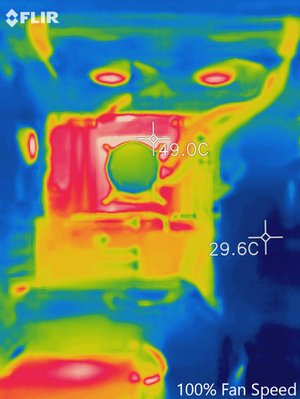
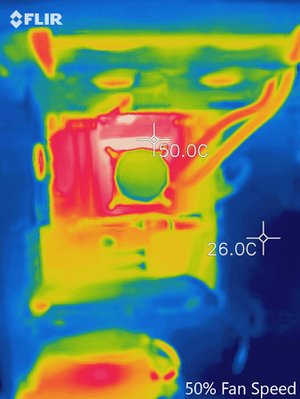
Thermal imaging from the FLIR ONE Pro camera provides an expected set of results with the 50 percent fan speeds. By bottlenecking the 280 radiator’s performance due to reduction in airflow, we saw thermal loading of the coolant, evidenced by the increased heat soak in the tubing and heat exchanger.
Get Tom's Hardware's best news and in-depth reviews, straight to your inbox.
Conclusion
The in-between radiator size doesn’t allow Deepcool Gamer Storm Castle 280RGB enough of a cooling advantage to make it a strong alternative to high-end 360 AIOs. It’s about as effective as smaller, high-performance 240 AIOs.
Aesthetically, the Castle 280RGB does offer a nice alternative to bland AIOs, especially with its sleek, cone-shaped housing and reflective face.
Price is this cooler’s most formidable downside, with superior thermal performance available to be had for less money. It would be more competitive if the price were about $20 lower. Ultimately, the toughest competition for the Deepcool Gamer Storm Castle 280RGB might just be its own price tag.
MORE: Best CPU Cooling
MORE: How To Choose A CPU Cooler
MORE: All Cooling Content

Garrett Carver is a contributor for Tom’s Hardware, primarily covering thermal compound comparisons and CPU cooling reviews; both air and liquid, including multiple variations of each.
-
Karadjgne There's multiple cases out there that don't offer 160mm or better motherboard clearance for an aircooler, but will mount a 120/240/360mm radiator. So if wanting to get a bigger cpu, add some OC and still have cooling capability over or above the cpu output, often a larger rad is the only alternative. Considering a decent, full custom loop can easily top $900 and requires greater periodic maintenance, fluid top-offs, fluid changes etc, an AIO fills the niche between what's cost effective and available when big-air simply is not an option.Reply
